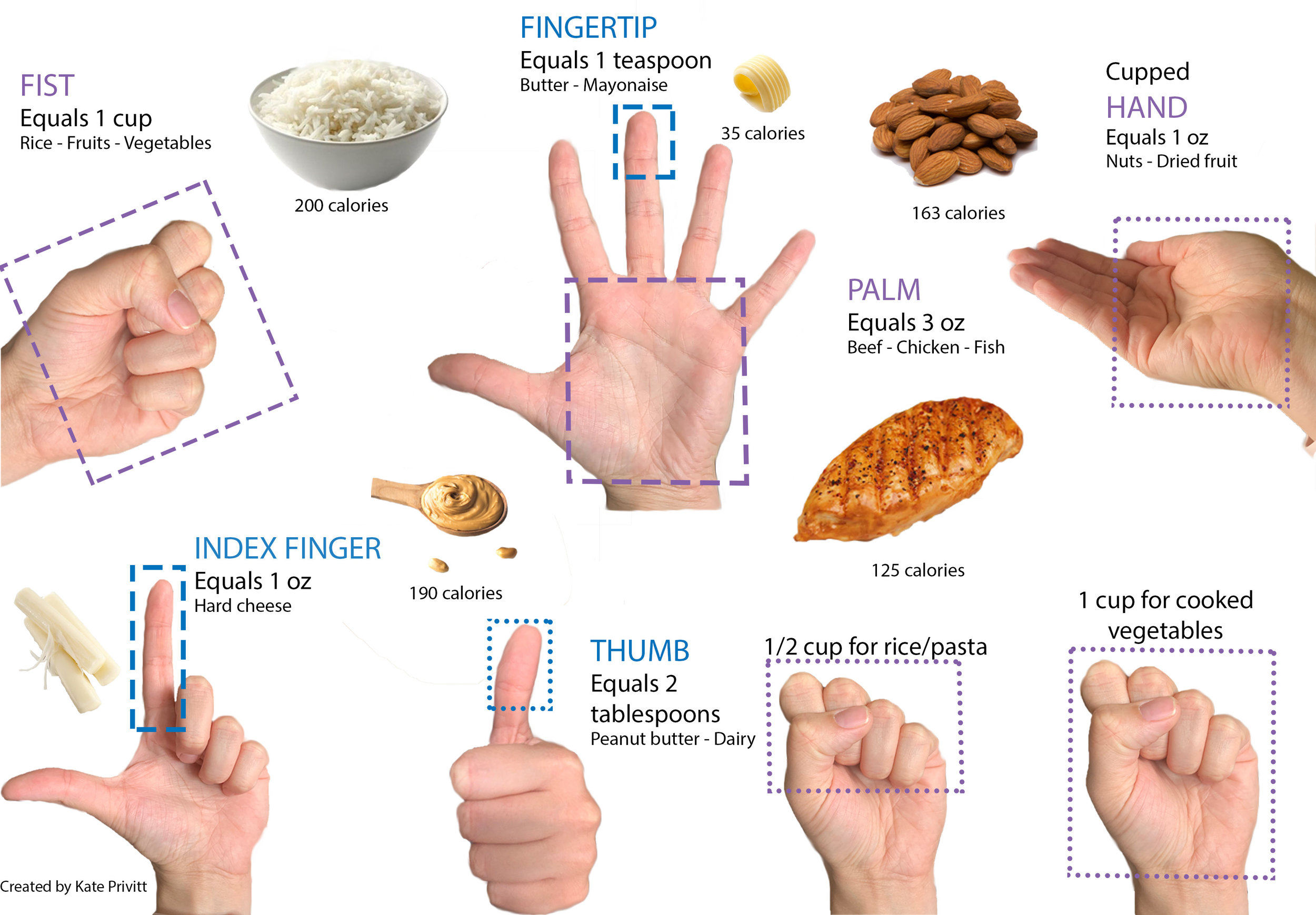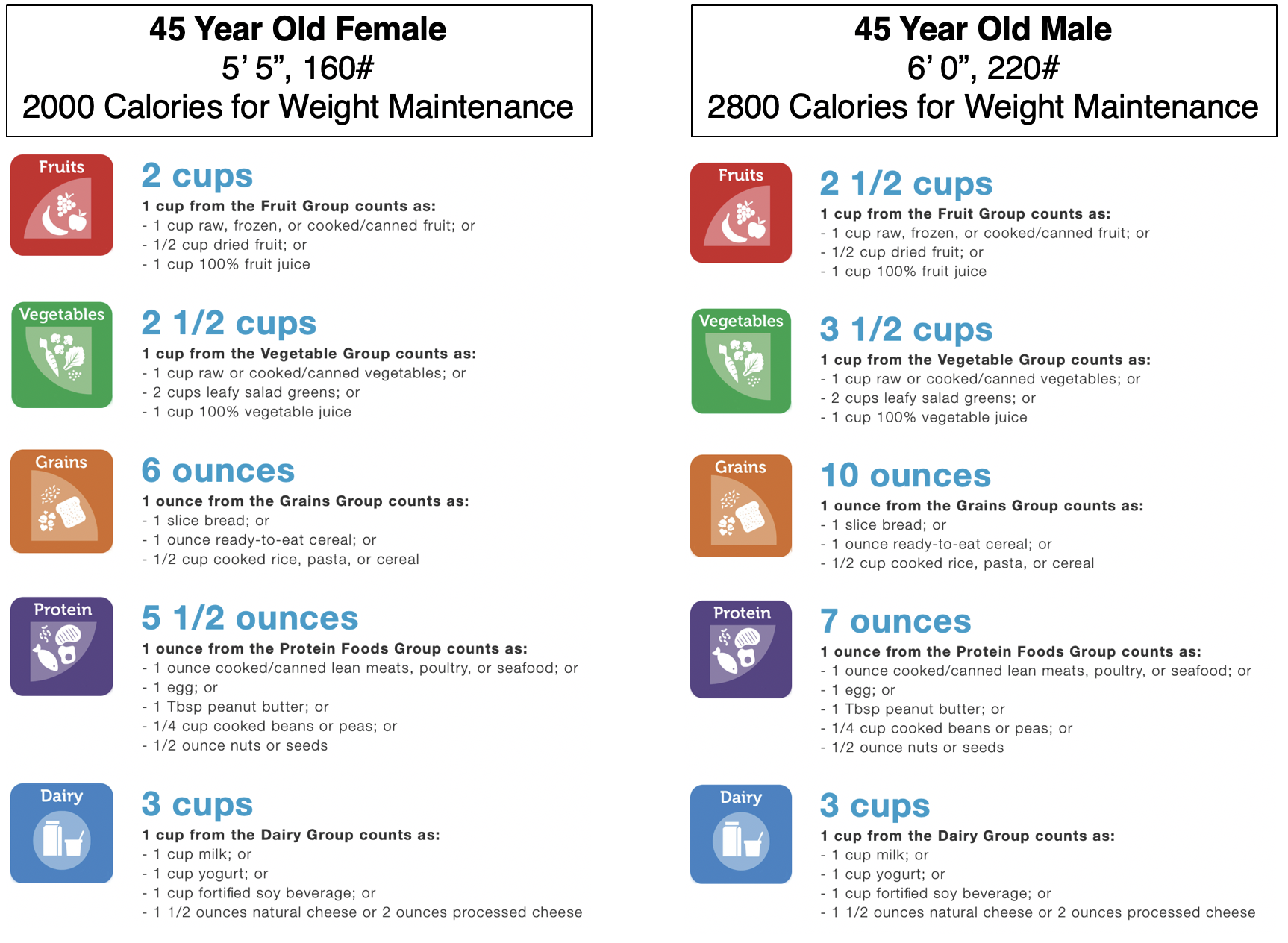the Portion size Guide to Healthy eating
In terms of calorie management, there are three main categories you need to be concerned with,
food frequency
calorie density
portion size
Food frequency refers to how often (frequently) you eat, calorie density is how many calories there are in a given portion of food, for example, there are far more calories in a stick of butter than in a similar sized banana (more calories are packed into a given volume), and portion size refers to how much of any given item you are either served (i.e. large restaurant portions) or the amount of food you eat at one sitting. As you could imagine, any one of these three items could derail your diet but the vast majority of us struggle with the better part of all three.
The purpose of this webpage is to provide you with a guide for what a portion of food actually looks like by using something that you always have on you as your guide, your hand. If you have read anything about nutrition recently, you have probably seen that portion sizes have increased dramatically over the years. Ordering a small drink of today would have been considered jumbo 30 years ago. Most of us have become so desensitized to these large portions that we have no clue as to what a “normal” sized portion of food actually looks like. Luckily, Kate Privitt, has put together this handy guide/cheatsheet to help you remember what a portion of food actually looks like.
A Portion Size Guide using Only Your Hand. Created by Kate Privitt.
The confusing part in talking about portions (and that we dietitians need to do a better job of) is that not everyone will eat the same number of portions, nor will you eat one portion of each item at each meal. Depending on your body size and calorie needs you will eat more or less portions during a 24 hour period. For example, I created two personas below, one 45 year old female and one 45 year old male. Although a portion is a portion the male is much larger, requires more calories, and therefore requires a greater number of portions (servings) than does the female.
Depending on Your Body Size and Calorie Needs You will Need to Eat a Different Number of Portions from Each Food Group. You can find what your food group needs are by navigating to ChooseMyPlate.gov.
The idea is that once you know your portion sizes (serving sizes) and food groups, that you, the American public will be able to design a diet to meet these recommendations. Well, I’m here to tell you that’s lunacy. To think that you’re going to take the time to create a diet to meet these exact needs and to stick with that diet is ridiculous. While I understand that we have to have some type of benchmark, some type of recommendation, there are very few people who are “type A” enough to be able to do this. Since this task is so incredibly difficult, people will say, well, I’m not going to do this but maybe I can pay someone to do it, and aha, in comes the dietitian.
Although it is a discussion for another time, I don’t believe we should try to micromanage our diets like this at all. Of course I believe that moderation, variety, and portion sizes are important; however, the way in which we currently go about applying them is nearly impossible to do. Instead, if I were you, I would focus more on meal planning, establishing consistent dietary patterns, know that you are doing the best that you can do, and for the most part, everything should take care of itself. I can’t show you everything you need to know about meal planning in one page but the first thing I would do if I were you is to start using the Paprika Recipe Manager App to help you meal plan and grocery shop. I started using the Paprika app when working with my clients and I have since found it to be an indispensable tool in my own life. I have created two videos showing you how to download the app and how I would recommend using it to meal plan.
Once you have begun using the app to meal plan, use the portion size guide that Kate created to ensure that you’re not overeating the foods that you’re making. If you choose to prepare recipes that contain at least some vegetables, you should be close to meeting your nutritional goals.
In the fall of 2019 I will also be launching a more in-depth meal planning service as part of my other company, The Science of Dieting. Please check back soon, this service is going to be bad ass and the last nutrition/meal planning service you’re ever going to need.

